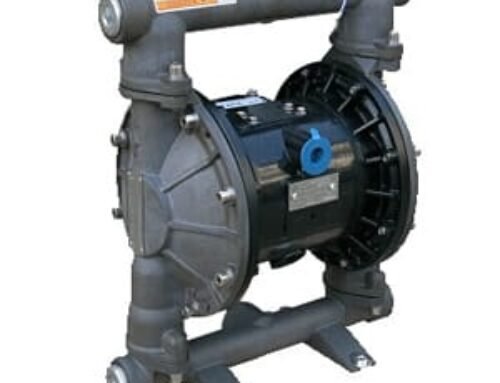In the petrochemical industry, precision, safety, and reliability are non-negotiable. Every piece of equipment must withstand corrosive fluids, high pressures, and harsh operating conditions while maintaining consistent performance. Among the most trusted systems in this environment is the motor-driven mechanical diaphragm pump, a positive displacement pump designed for accurate, leak-free fluid handling.
How It Works
A motor-driven mechanical diaphragm pump uses an electric motor to create reciprocating motion that moves liquid through a flexible diaphragm. The motor turns a crankshaft or eccentric cam, which pushes and pulls the diaphragm in a steady back-and-forth motion.
When the diaphragm moves backward, it creates a vacuum that opens the inlet valve and draws liquid into the pump chamber. When it moves forward, it compresses the fluid, closing the inlet valve and opening the outlet valve, forcing the liquid out. This continuous cycle produces a metered, pulse-like flow that is highly accurate—ideal for dosing and chemical injection tasks common in petrochemical processing.
Because the diaphragm forms a barrier between the pumped fluid and the mechanical drive, there is no direct contact between liquid and moving parts. This design ensures complete sealing, making the system safe for handling toxic, flammable, or corrosive chemicals used in refineries and chemical plants.
Why It Fits Petrochemical Applications
The motor-driven diaphragm pump’s key advantage is its leak-free operation, a critical requirement in petrochemical environments where even small leaks can cause contamination, explosions, or regulatory violations. Its diaphragm design eliminates the need for shaft seals, significantly reducing failure points and maintenance costs.
The pump’s chemical and thermal resistance makes it suitable for aggressive media such as sulfuric acid, methanol, caustic soda, and hydrocarbon mixtures. Materials like PTFE, PVDF, and SS316 stainless steel are used for the diaphragm and wetted parts to ensure compatibility with a wide range of fluids.
Another important feature is its accuracy and pressure stability. The pump maintains consistent flow even when discharge pressure fluctuates, thanks to adjustable stroke length and motor speed. This precision is crucial for processes like catalyst feeding, additive dosing, and corrosion inhibitor injection, where chemical ratios must remain exact to protect equipment and ensure reaction quality.
In the petrochemical sector, a motor-driven mechanical diaphragm pump offers the perfect combination of safety, control, and endurance. Its sealed design prevents leaks, its robust materials resist chemical attack, and its precise metering capability ensures steady, reliable operation under extreme conditions. For continuous-duty applications that demand both accuracy and durability, it remains one of the most dependable pump technologies available.






Leave A Comment